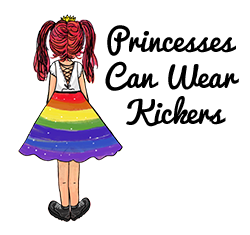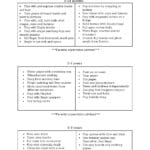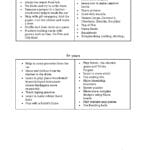If your child has difficulties with tasks such as writing, drawing and cutting, it is highly likely they have poor fine motor skills. It is these skills which allow us to control the small muscles in our hands and wrists with ease. Fine motor skills activities include everyday tasks such as tying shoelaces, holding pens/pencils, cutting and doing up buttons.
Struggles with everyday activities
These movements are so natural for most people that we don’t even think about them. However for some, and especially for kids with dysgraphia, completing tasks that require the use of fine motor skills can be very tricky. For kids with dysgraphia, fine motor skills activities must be practiced and often cause frustration.
For a concise and clear overview of dysgraphia, click here.
Milestones
Children develop at different rates. However, there are general milestones which are usually met at specific ages – including fine motor milestones. These include being able to use cutlery and copying shapes and letters aged 5/6 and drawing and using tools such as rulers without becoming too irritated aged 9/10. If your child has poor fine motor skills, do not despair. There are so many things your child can do at school and at home to help.
Click here to find the best tools for dysgraphia
The list below contains suggestions for ways your child can strengthen their fine motor skills – often without even realizing they are doing so. Click to expand, or to download the list as a PDF file, click here
Download it, print it, save it and share it!
For a list of fun activities for dysgraphia, click here and when you’re done,click here to find out which family games can help your child with their writing.
There are so many ways we can help our children both at school and home. If you or your child are struggling and you’d like some advice – or even if you’d just like a friendly ear, contact me at any time. I love to hear from you all xx
Here are some great deals on Amazon for toys and activites to strengthen your child’s fine motor skils, whatever the age.
Please note, as an Amazon Associate I earn from qualifying purchases
- 6 colors, 6 different dressing skills training.
- This is a good way to exercise children's finger flexibility and help them learn the most basic dressing skills.
- It is a good parent-child toy. It is also a good preschool and kindergarten toy.
- A quiet skills booklet made of cardboard and non-woven fabric.
- Suitable for children aged 2-7 years old.
- ✨【 Wooden Toddler Activities】Safe and reliable toys made of natural wood,non-toxic and environmentally friendly paint. Smooth surface, rounded corners design.Toddlers’ safe always come first.
- 🌟【Fun Montessori Toys】As a montessori toy helps children develop eye and hand coordination, fine motor skills, creativity, imagination, curiosity and discovery skills. Develop problem-solving skills and learn to think logically
- 🦌【Learning Educational Toys】Magnetic puzzle toys combines elements of letter learning and children’s games. Some parking spaces in the parking lot are marked with different letters, and children need to park their cars in the corresponding spaces based on the letters. This design makes learning fun and motivates children to learn letters.
- 🎁【 Ideal Gift Choice】Packed in a beautiful box, bright colors and cute shapes attract children's attention. Great gift for birthday, party, Christmas,etc. We believe it will bring joy to your children. Click Add to Cart Today!!
- 🎊【100% Satisfaction Guarantee】30-day return guarantee. We cannot guarantee 100% non-defective goods, but we guarantee 100% service to every customer when they have questions.Please feel free to contact us by email. Satisfied customer service is our responsibility.
- 🌳🐻【Wooden Lacing Cards for Kids】Our forest animal wooden lacing card is the PERFECT CHOICE for you and your kids as it is made from natural wood, extra thicken panels with well designed. This art and craft kit is suitable for 3+ years kids and represents the perfect activity to learn through play!
- 🌳🦌【Forest Animal Sewing Toys】Our cute wooden toy set includes 6 forest animal panels (deer, bear, rabbit, fox, hedgehog and squirrel) with 6 matching laces. It will provide hours of entertainment for your littel one. The 6 thicken animal panels are that come with this art set are durable enough to play everywhere you want - an excellent hand-eye and wrist coordination challenge for your child!
- 🌳🦊【Arts and Crafts Kits for Toddlers 】 Our toddler activities learning toy is designed to help children develop their fine motor skills, hand-eye coordination, color recognition, critical thinking and problem solving skills. It also helps young kids to discover the world by touching different items and observing the results on his actions.
- 🌳🐿️【Child-Safe & High-Quality】We insist on adopting high-quality craft and making delicate products attentively for toddlers. This sewing kit for kids is made of 100% non-toxic wood with water-based paint, child-safe, as well as eco-friendly. The edges of this sewing toy are smooth and won't hurt the toddler's skin.
- 🎁【Awesome Gift for Kids】🎁Our Wooden lacing card is the top toys gifts for toddlers suitable for any situation, such as birthday gifts, Easter gifts, holiday presents, daily toys. Don't miss any chance to surprised your kids.
- Paper-cutting project book with pre-printed activity pages
- 20 activity pages
- Includes plastic safety scissors that naturally encourage proper form
- Features mazes, puzzles, animal art, sequencing activities, and much more
- Makes a great gift for girls and boys, ages 4 to 6, for hands-on, screen-free play; product made with FSC-certified materials that support responsible forestry; applies to new inventory only (FSC C156584)
- Silly Science Sorting Party: When they sort the colorful germs in this fun science-themed STEM toy for kids, little ones explore the building blocks of early science skills!
- Count, Sort, and Match: With the help of this set’s toddler activities, kids can build new color, shape, and number skills every time they play
- Two Fine Motor Tools: Strengthen your preschool fine motor skills with this set’s two specialized tools—squeeze your way to increased hand strength with the clamp, or work on precision with the tweezers!
- Ages and Stages: Specially designed with little ones in mind, the educational toy for 3 year olds helps kids build counting, sorting, and matching skills with preK manipulatives!
- Give the Gift of Learning: Whether you’re shopping for holidays, birthdays, or just top toddler toys, toys from Learning Resources help you discover new learning fun every time you give a gift!
- ❤ PERFECT FOR YOUR LITTLE ONE - Start building smart minds with the right educational toys. The bright and interactive toy will enhance hand dexterity, can inspire children's imagination, as well as promote their physical and intellectual development, color recognition, and fine motor skills while engaging little minds.
- ❤ SAFE AND NATURAL MATERIALS - These wood blocks are made of healthy and natural water-based paints, non-toxic and environmentally friendly. The chopsticks, spoon, and clip are sized for baby's grip, and they are lightweight.
- ❤ ENCOURAGES HAND-EYE COORDINATION AND IMAGINATIVE PLAY: This Montessori 3 year old toy is a wonderful educational toy for toddlers, helping children learn shapes, colors, counting, and hand-eye coordination. Great toddler toys for 3-6 years old kids. In addition, it is also suitable for the elderly, such as your grandfather and grandmother, to help exercise their hand mobility and mental thinking skills.
- ❤ DEVELOP BASIC LIFE SKILLS: Let your child learn how to use chopsticks, spoons and tongs through games. Use toothpicks and clips to hold the beads, place the beads into the panel slot, and exercise your baby's hand-eye coordination and hand movements.
- ❤ GOOD GIFT: The beautiful color of this beautiful wooden toy is very attractive to children. It is the best choice for early education toys and Elderly educational toys.
- BUILD fine motor skills as you snag oodles of noodles for knock-out bowls of ramen!
- 3-IN-1 LEARNING: preschool fine motor, counting, and color skills!
- SOLO or group play—test fine motor skills on your own or with up to three friends!
- ALL-IN-ONE reusable packaging acts as game board and storage!
- GIVE THE GIFT OF LEARNING: Whether you’re shopping for holidays, birthdays, or just because, toys from Learning Resources help you discover new learning fun every time you give a gift! Ideal gift for Halloween, Christmas, Stocking Stuffers, Easter Baskets Stuffers or even for Homeschool.
- Combines the fun of coloring and stickers with the creativity of paint by number
- Includes everything you need to create bright, playful, full-color illustrations
- Featuring koala, elephant, frog, red panda, snake, giraffe, tiger, and gorilla images
- Contains 10 different 9” x 9” images plus sticker sheets and easy instructions to complete each
- Workman Publishing (Author)
- PREMIUM PULL & STRETCH BALL SET: Experience effective stress relief and endless fun with our YoYa Toys Pull & Stretch Ball Set. These squishy fidget toys are your perfect companion wherever you go, allowing you to play, squeeze, and stretch them to your heart's content.
- DURABLE SENSORY SQUEEZE BALLS: Don't settle for cheap stress balls. Our well-constructed elastic balls are made from resilient materials, ensuring durability even during heavy use. Bounce, squeeze, and shape them as you please, providing endless entertainment and sensory stimulation.
- EXCELLENT CRAFTSMANSHIP: Our colorful bouncing exercise balls are meticulously crafted for supreme comfort and relaxation. The ergonomic size makes them easy to grip and carry, making them ideal fidget toys for both kids and adults. Let the tactile sensation of these elastic balls melt your stress away.
- MULTIPURPOSE STRESS RELIEF BALL SET: These elastic stress relief balls are designed with versatility in mind. They make fantastic gifts for kids and are therapeutic tools for anxiety and stress relief. Perfect for individuals with special needs such as autism, ADHD, and OCD. Make any occasion extraordinary, be it Christmas, birthdays, or any other noteworthy event. With these balls, relief and joy go hand in hand!
- STIMULATE FINE MOTOR SKILLS: Enhance fine motor skills, creativity, and problem-solving with our anti-stress balls. Take them anywhere, from the office to the classroom, or simply enjoy a calming walk in the park. Keep an extra one in your backpack, stroller, or glove compartment for instant calming when you need it most.
- DIY Sparkly Photo Frame Craft Kit! Create an impressive shimmery picture frame using colorful and sparkly gems! As your kids carefully place the gems on the frame, they’ll develop fine motor skills and hand-eye coordination. Once they’re done, your kids will create something they’ll be so proud to display!
- A Complete Craft Kit! Everything you need is included to make a DIY picture frame, including a high-quality wooden frame (fits a 5”x7” or 4”x6” photo), sparkly gems in 4 different colors, a wax pencil to pick up the gems, a design template sheet, clear glue, latex finger gloves, a popsicle stick to apply glue with, and complete step-by-step instructions.
- Makes a Great Gift! This DIY picture frame kit makes the perfect gift for crafty kids. The Sparkly Photo Frame craft kit comes in attractive, ready-to-gift packaging. Your kids will be thrilled to receive it as a birthday gift, Easter basket stuffer, stocking stuffer, Hanukkah gift, and more!
- Open-Ended Creativity for Kids! With this kids' picture frame craft kit, your kids can use one of the pre-printed patterns included in this craft kit or use their creativity to design their own sparkly photo frame! This kit helps your kids express themselves and build lasting confidence.
- Tested for Safety! We test all Purple Ladybug DIY kits for kids for safety in an independent laboratory to ensure they meet toy safety standards, including the Sparkly Photo Frame craft. Your satisfaction matters to us!
- CREATIVITY & IMAGINATION TOYS: The building toys are designed as 125 piece including the 6 building tools , the building blocks can be combined into many different patterns such as vehicle, robots , amimals and anythings the kids can imagine which can great improve their Hands-on ability, imagination ,creativity , master fine motor skills,hand-eye coordination. it is a good and interesting interactive games between children and parents, kids and their friends, teachers and students !
- GREAT STEM LEARNING :This teacher-recommended, innovative play set provides your kids with a solid foundation for in-demand skills! From science and physics to math and geometry, our educational toys encourage kids to build their critical thinking and problem solving abilities as well as their teamwork and social skills.
- SAFETY MATERIAL:The kids Building Blocks STEM Construction Engineering Kits are easy to wash and come with a sturdy storage box for quick and convenient cleanups. all 125 piece bright, colorful, non-toxic are certified Phthalate, Lead, Cadmium, and BPA-free which make sure your kids to use it without any worried !
- PERFECT GIFT FOR KIDS: building block gift toys are prefect for 3-10 year old boys, teen girls gifts, kids birthday gifts ,holiday, christmas, halloween, new year!
- A full-color builder's guide with 17 ideas for beginner, intermediate and advanced builders ensures creativity, success make all kinds of vehicle, robots, and amimals.















Recent Comments